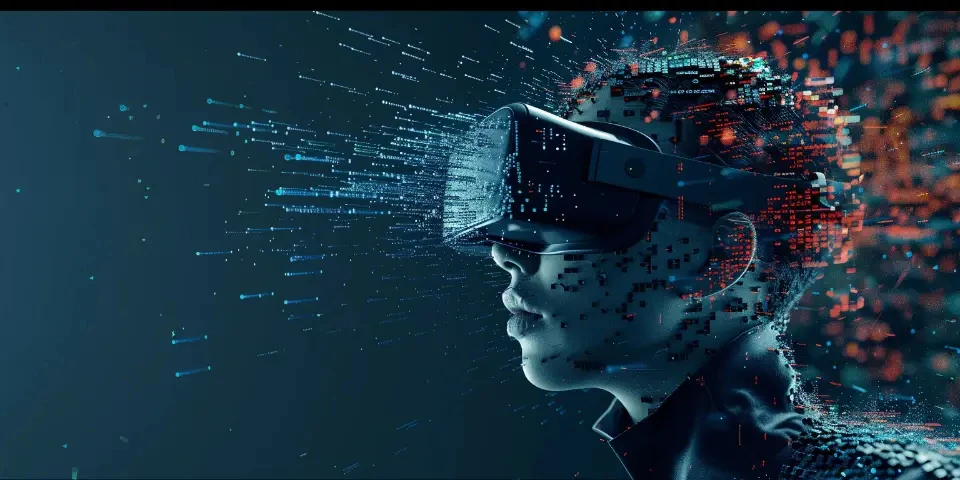Redefining Boundaries AI Enables Creation of Unrestricted Images
Artificial Intelligence (AI) has revolutionized a multitude of industries, from healthcare to autonomous vehicles. One area where it has made remarkable strides is the creation of unrestricted images. By leveraging AI algorithms, researchers and artists have been able to push the boundaries of creativity, resulting in stunning and previously unimaginable visual experiences.
The Power of AI Algorithms
AI algorithms play a pivotal role in generating unrestricted images. They utilize deep learning techniques, such as Generative Adversarial Networks (GANs), to learn from a vast amount of existing images and then generate new ones. This process involves a generator network that produces images and a discriminator network that evaluates their authenticity and provides feedback for refinement. Through iterative training, AI algorithms create images that possess unique characteristics while adhering to the constraints imposed.

The application of AI algorithms in unrestricted image generation has numerous implications across various sectors:
1. Artistic Expression
The use of AI algorithms in creating unrestricted images allows artists to transcend the limitations of conventional media. They can experiment with novel concepts, blend diverse styles, and even introduce elements that do not exist in the physical world. Artists can leverage AI tools such as DeepArt or RunwayML to explore new artistic possibilities.
2. Design and Advertising
In the world of design and advertising, AI-generated images provide an avenue for innovative and eye-catching visuals. Designers can harness AI to create stunning graphics, logos, and product designs that captivate audiences. Companies like Adobe hold competitions enabling designers to showcase their AI-assisted creativity.
3. Virtual Reality and Gaming
AI's role in unrestricted image creation is particularly prominent within the realm of virtual reality (VR) and gaming. The creation of lifelike, immersive environments becomes more feasible with AI algorithms that generate realistic landscapes, characters, and textures. This enhances the overall sensory experience and bridges the gap between reality and virtual reality.
4. Architectural Visualization
Architects and interior designers can benefit from AI-generated images by visualizing their designs in photorealistic detail. AI algorithms can generate realistic renderings, helping to convey the vision of a space before it is built. Architectural firms like Autodesk's Revit and SketchUp integrate AI-based rendering tools to enhance their design processes.
5. Fashion and Retail
AI-generated images have found utility in the fashion and retail industry. They enable virtual try-on experiences, allowing customers to visualize themselves wearing different clothes without physically trying them on. Online retailers such as LVMH-owned 24S integrate AI technology to provide interactive shopping experiences.
6. Medical Imaging
AI's capabilities in unrestricted image generation extend to the field of medical imaging. Radiologists and doctors can leverage AI algorithms to enhance medical scans, generate detailed visualizations, and aid in the diagnosis of complex conditions. AI-assisted medical imaging platforms like Aidoc have transformed the way medical professionals interpret and analyze images.
7. Ethical Considerations
While AI enables the creation of unrestricted images, ethical considerations must be addressed. The potential for generating fake or misleading visual content raises concerns about misinformation and manipulation. Stricter regulation and responsible AI usage are crucial to ensure that the output generated by AI algorithms is used ethically and responsibly.
Frequently Asked Questions:
Q: Can AI algorithms generate images indistinguishable from real photographs?
A: AI algorithms have made significant progress in generating images that closely resemble real photographs. However, trained experts can often identify subtle differences that distinguish AI-generated images from authentic photographs.
Q: Are there any limitations to unrestricted image creation using AI?
A: AI algorithms can face challenges in maintaining consistency, fine details, and realism, particularly when generating complex scenes or objects. However, ongoing advancements continue to minimize these limitations.
Q: How can AI-generated images impact the job market for artists and designers?
A: AI-generated images offer new tools for artists and designers to explore and enhance their creative process. While AI may automate certain aspects, human creativity and artistic interpretation remain invaluable, ensuring that human input sustains its significance in the job market.
References:
[1] Adobe Design Achievement Awards. (2021). Retrieved from https://www.adobeawards.com
[2] Aidoc. (2021). Retrieved from https://www.aidoc.com
Explore your companion in WeMate